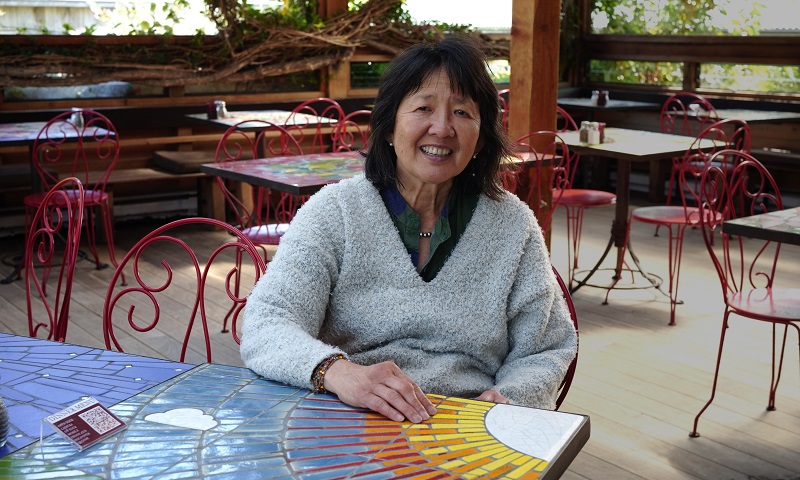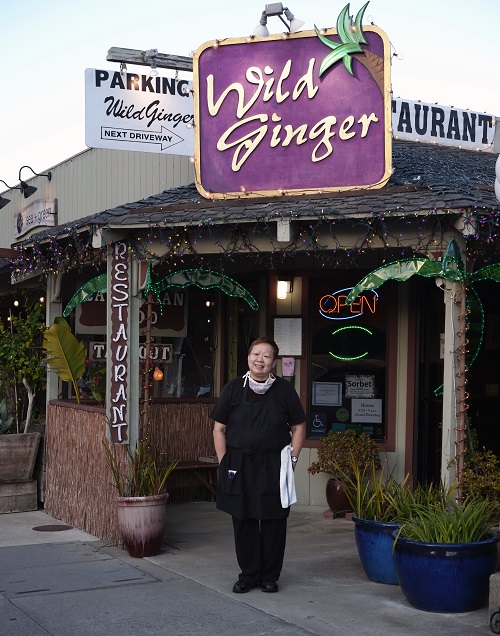The restaurant industry was blunted hard and fast during the COVID-19 pandemic. Many closed their doors during long periods of lockdown and some won’t reopen again. But like leaders across many different industries, restaurant owners that survived evolved and even grew during this unprecedented time leaned on digital technologies to keep their customers fed, even if that meant keeping their doors closed to the public.
The National Restaurant Association said restaurants lost more than $80 billion during the first two months of the lockdown in 2020. By the spring of 2021, the industry saw the deficit exceed $250 billion. About 110,000 locations – less than 20 percent of total locations – closed during the pandemic, either temporarily or permanently.
The pandemic forced many restaurants to dramatically shift their business model, doing what they had to do to stay afloat, namely serving food outside. Just about all shifted to take-out service. With current technologies, even restaurants with barely a digital presence were able to adopt almost instantaneously.
“One restaurant I know of, within about four days in March, pivoted to more digital,” said Perry Quinn, senior vice president of business innovation development for the National Restaurant Association. “They turned it on and had 250 orders that day.”
Quinn said take-out and curbside pickup essentially saved the restaurant industry.
“Those that embraced and got in front of the digital side of this, whether it's email, web, mobile, online ordering, etcetera, really hit the ground running as it related to just extending their services to their existing customers.”
Shift to Takeout Only
The majority of eateries, even formal sit-down establishments, were sending meals out the door in boxes and bags.
“Our main concern,” said restaurateur Shanny Covey, “was what could we do to stay open?”
She co-owns and operates three restaurants in San Luis Obispo County, California. Her main eatery, Robin’s, named after her former husband and still business partner, has an atrium-like dining room in Cambria, a town just south of Hearst Castle along coastal Highway 1.

Covey was tech-focused before the pandemic hit, relying on a digital point-of-sale platform and a robust social media presence. The pandemic lockdown pushed her to go all-in with take-out and curbside pickup, requiring a better online and contactless ordering system.
Her restaurant’s free WiFi service prior to the lockdown allowed her to email newsletters to clients about specials and new menu items.
“It kept a few of us employed and it paid for some of the fixed costs we still had to be responsible for,” said Covey. “So it was important to get us through, though it wasn’t sustainable forever.”
Today, with the dining room open again, Robin’s is back to sit-down fare.
“This is what we do,” said Covey, “but I have to say that take-out is here to stay. With the apps that make it easy for people to see us and order from us, it’s now an important part of the business.”
Three blocks away in Cambria is Wild Ginger, owned and operated by Covey’s sister, Deborah Mok. It started as a take-out eatery many years ago and evolved into sit-down dining. That was before the lockdown, which turned out to have a silver lining. Mok decided to stick with take-out only.
“Take-out allows me to focus on the kitchen, to make excellent, Southeast Asian, street food,” said Mok.

Her inspiration comes from growing up in Singapore where the hawker stands serving street food are an institution.
“The street food is the best, and that's where a lot of our inspiration comes from,” Mok said. “Singapore is a food paradise. That's what I've been trying to bring to Cambria.”
And Covey calls Singapore the food Mecca of the world. “Yes, there are world-class restaurants, but the hawkers make amazing take-out food. Indian, Malaysian, Chinese, European… from everywhere.”
Digital Technology Became More Critical
Having the hawker model in mind, it wasn’t hard for either of the sisters to envision an abrupt pivot to take-out. The more challenging part was staying digitally connected with customers, making their menu and service discoverable online, and making sure the ordering process was simple and reliable.
“I'm not a very technology-savvy person,” said Mok. The Wild Ginger website doesn’t offer online ordering, as she prefers an old-fashioned phone call. But when the pandemic hit, her digital presence became a priority. “We improved our website tremendously.”
Mok took advantage of updates and improved the processes to keep menus accurate and timely. “But, if you want to talk to someone who knows the tech, talk to my sister.”
“We had to look at platforms that integrated with our point-of-sale software,” Covey said. Before the lockdown was official, “we started figuring out what we needed and then looked for the apps to make it happen.”
Software Gets More Robust, Easier to Use
Not too long ago, a restaurant operator who wanted extensive web functionality like online ordering and curbside delivery would have had to do the IT development themselves. It was an arena national chains played in due to their ability to scale.
But the advent of the cloud and virtualization technologies have created a potent IT infrastructure. Developers of apps for retailers can rent inexpensive cloud services such as Amazon AWS and offer an array of tools for stores, restaurants, and bars.
“There's so much work on the backend to make the user experience and the onboarding from a speed and efficiency perspective much easier than it used to be,” said Quinn.
Software developers also scrambled to meet the needs of restaurant owners.
“Something that would have taken maybe 12 to 18 months just happened in 2 to 3 months,” said Tarak Parekh, director of product management for enterprise cloud software company Nutanix.
“I don't think it would have happened (during COVID-19) if the digital adoption that was already underway was not there.”
Developers of point-of-sales technologies, kiosks, or digital menus had the infrastructure they needed to roll out apps for restaurateurs to meet the challenge of closed dining rooms.
“We found that since COVID,” Covey said, “software engineers have been working around the clock, trying to get platforms made, designed, and ready for restaurants and other businesses to use. So we've grown along with them, giving them feedback as to ‘this works, this doesn't work.’'
The acceleration of digital development leads Perry Quinn to wonder how much faster we will see delivery platforms like driverless cars, robots and drones. “I think the success of restaurant IT has people thinking about these next steps.”
One fear is that food itself will be handled by automation to which Quinn registers a definite no.
“At least for the foreseeable future that’s just not going to happen,” he said. “People start restaurants because they have passion, they have passion for food and they have a passion for community.”
The technologies, he emphasized, are tools to help them do better.
“I've always been business-minded, and I’m a people pleaser,” said Covey. “I love serving people and making them happy. My goal has always been to focus on doing the best that we can every day for our guests.”
Her advice for growing a restaurant business: focus on customers, food and ambiance.
Jason Lopez is executive producer of Tech Barometer, the podcast outlet for The Forecast. He’s the founder of Connected Social Media. Previously, he was executive producer at PodTech and a reporter at NPR.
© 2021 Nutanix, Inc. All rights reserved. For additional legal information, please go here.







